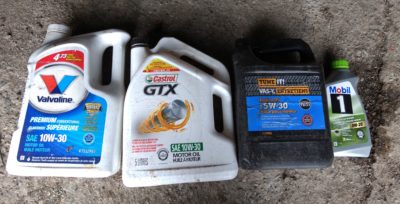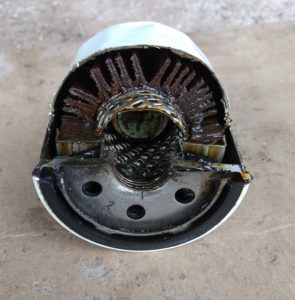Whether you’re able to break out the lincoln grease gun and tool kit for anything that goes wrong for your car or you’ve never even opened a bonnet before, an oil change is definitely one of the easier car issues to deal with. One day you’ll be driving along and see the maintenance reminder light up on your dashboard, or maybe you’ll glimpse the little sticker in the corner of your windshield. Either way, you know that it’s time to get your oil changed. This simple act of maintenance is crucial to keep your car running on all cylinders. You’ll think back to the time that you were reading how to maintain your vehicle properly that you found on a company website such as Czok. Then you’ll remember that you forgot to keep maintaining your vehicle throughout the year and this is why you didn’t realize that your oil needs a change.
Oil doesn’t just lubricate your engine, it also cleans, cools, and protects all the moving parts within the engine. Having good, clean oil in your car means that those parts can move freely and work as intended. On the other hand, if neglected, engine oil can build up a sludge that makes it harder for the engine to function, which can ultimately cause the engine to fail.
For those of us who can swing a wrench, or for those of us with any of the Top 5 DEWALT Torque Wrenches in our automotive toolkits, oil changes are easy to do on our own. If you’re less mechanically inclined, though, there are plenty of places to get your oil changed, like quick and convenient oil change facilities, independent and chain shops, and of course your local dealership. Having a trained technician swap out your oil is a simple and fairly inexpensive process, but there are a few things to keep in mind before handing over your keys at the service desk.
 1. Know what type oil that your car uses. Oil is to your engine as blood is to your body. Each of us runs on a certain type of blood, and with the wrong type in our veins, we won’t stay healthy for too long. Cars operate the same way with their oils. If you use the incorrect grade, you could damage valves, pistons, and all the other bits that move inside the engine.
1. Know what type oil that your car uses. Oil is to your engine as blood is to your body. Each of us runs on a certain type of blood, and with the wrong type in our veins, we won’t stay healthy for too long. Cars operate the same way with their oils. If you use the incorrect grade, you could damage valves, pistons, and all the other bits that move inside the engine.
There are a variety of oils to choose from, like 0w20, 5w30, 5w40,10w30, 15w40, fully synthetic, semi-synthetic, non-synthetic, high mileage, high age–even purple! How can you be sure which is the right one for your vehicle? Fortunately, this information is provided in your car’s handbook, usually in the maintenance section. The handbook can tell you the qualifications and grade of oil your vehicle needs.
If you don’t have the handbook, there are many online resources that give you this information. Most oil manufacturers have helpful guides on their websites (like Pennzoil’s, for example). You can also check the emissions sticker, place a call to the dealer, or look at the oil cap under the hood.
Make sure you ask the parts person or service advisor for the correct oil, and don’t be fooled by a synthetic upgrade. If your car was designed to run on conventional or semi-synthetic oil, there will be little gain for “upgrading”. Stick to what your car’s manufacturer recommends–that way you wont be stuck on the side of the road with a burnt up engine!
 2. Choosing the right oil filter. Now that you have the right oil for your car, you need to make sure that the oil stays filtered and clean. Not all filters are the same. A regular oil filter may only be rated for a 5,000 kilometer service interval. That’s fine if you’re running conventional oil, but not good at all if you’re using semi- or fully synthetic.
2. Choosing the right oil filter. Now that you have the right oil for your car, you need to make sure that the oil stays filtered and clean. Not all filters are the same. A regular oil filter may only be rated for a 5,000 kilometer service interval. That’s fine if you’re running conventional oil, but not good at all if you’re using semi- or fully synthetic.
I always recommend asking for a premium filter. Most of the time, a premium filter is the closest to what your car would have come with out of the factory. It will also filter the oil more effectively and have a longer service life. The few extra dollars spent on the filter are well worth it. Check out this photo of a regular oil filter at the end of its service life. You can see the filter element is saturated with the old dirty oil. If you feel you have an oil filter in your car that looks like this, get it changed! You could ask your nearest garage for the same, though it is very possible to do it yourself as well (if you’re a car enthusiast, that is)! All you would need to do is buy parts online (or offline, your discretion completely) and get to work! But do make sure to get the oil filter that is best suited for your car.
3. Timing is everything. Whether you rely on a sticker, maintenance light, or some other way to remind you to change your oil, don’t ignore it. As oil ages it gets thicker and gross and black and just eww. Engines do not like eww! Over time, the oil loses its ability to lubricate, cool, and protect the engine, so neglecting the oil service will result in major problems. As a rule of thumb conventional oil should be changed every 5,000 km (3,000 miles), semi-synthetic around 8,000 km (5,000 miles), and synthetic every 10,000 km (6,500 miles).
Knowing the correct grade of oil and making sure you install the right filter will keep your engine running smoothly. Having this information ahead of time will ensure that you get the best service for your money. It can also keep you from buying fancy upgrades and prevent larger repair bills in the future. The next time the maintenance reminder light comes on, you’ll know what to do with confidence!
